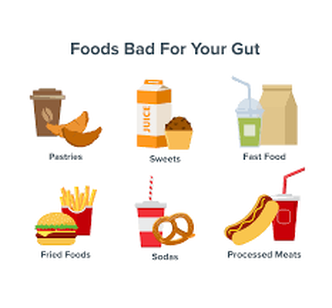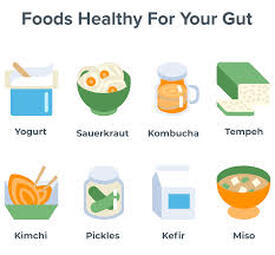|
Originally from Eugene, OR, George returned to the area in February of 2024 to be closer to his family and to serve the community where he grew up. He has a Bachelor in Kinesiology with minor specialty in Spanish from Oregon State University, and received his Doctorate of Physical Therapy from University of Washington. His specific clinical interests include working with rock climbers and cutting/jumping athletes, as well as working with pediatric populations. These reflect his personal background as a climber and ultimate frisbee player, as well as an older brother to several siblings. His clinical approach consists of enabling his patients to meet their goals and focus treatment on what is applicable to them. He comes at problems with a combination of evidence based practice, patient education and flexible treatment strategies that incorporate what works best for each patient as an individual.
0 Comments
The age of social media is here to stay. From first steps and first words to graduations and marriages, just about everything goes onto social media in some form. Beyond sharing life events and keeping in touch with friends far and wide, we have seen a massive increase in the use of social media to disseminate information. In many ways this is a good and exciting thing. This very blog post is an example of a well intentioned individual giving advice on combatting a common problem experienced by their audience. However, due to the sensationalist type of content that tends to perform well on social media sites such as Tik-Tok and Instagram it can be very difficult for consumers to sift through the wealth of information available to find what’s useful, what’s being misrepresented, and what’s being exaggerated. The purpose of this article is to give you a few simple tips to read between the lines of social media posts surrounding health and wellness, and help separate useful tidbits from the chorus of ‘unlock your hips’ and ‘bulletproof your knees’.
The first sign that a piece of information is being misrepresented is oversimplification. With a few notable exceptions such as smoking cigarettes being bad for you, and exercise being good for you, there is very rarely a piece of health advice, a specific stretch, or a specific food or supplement that can be touted as universally helpful or universally harmful. While this kind of content seems relatively harmless, if you are not mobile or strong enough to perform one of these exercises with good form or control there is potential to further injure yourself. Indicators that content is adhering to these principles include giving progressions and regressions of exercises, reviewing the context in which an exercise is useful, and providing some disclaimers for safety or common ways people compensate/break form. Another way that fitness influencers often farm engagement is by making bold claims that run contrary to ‘common knowledge’. Whenever someone is trying to challenge conventional wisdom, the burden of evidence they need to provide is higher than when they are presenting other ideas that run parallel to how we view the body holistically. Challenging common knowledge is not a bad thing in and of itself, but if you must give context of when and why the “rules” can be broken. Often times the conventional knowledge is conventional for a reason, so think twice about the content you consume that discredits it, and look for content that is thorough and tempered in its approach rather than sensationalist. A final tip for finding good pieces of content to consume is to listen to what other people have to say about the creator, as well as listening to how the creator talks about others. A creator that is dedicated to providing good information will attract others who want to provide the same. Conversely, while engaging in online arguments can create a lot of engagement and provide entertainment for an influencers audience, it provides little actual educational value. Checking on whether a creator is consistent in their messaging, and how much of their platform is their own ideas versus calling others out can give insight on how much actually important content they have to share. Spending a bit of time checking what other trusted sources of information have to say about an influencer can help construct the lens through which you view the content they create. The human body is complex, and it can be tempting to blindly trust the advice of people online who have large followings and seem to be educated and well spoken. However when we talk about health and wellness, misinformation can have effects that range from wasting time to creating more injury. By being critical of the information you consume and being wary of content that is snappy and controversial you will be able to effectively utilize the tool of social media for maximum benefit. Some of the most common words to hear from your health care providers are “don’t sit too long”. Sitting for hours on end has various negative health effects, including increased back pain, reduced heart health, impaired mood and poor regulation of blood sugar. Unfortunately though, our society isn’t set up to make getting up and walking around throughout the day easy. Efficiency and having the appearance of being on task is highly valued in the workplace, and taking frequent, non-scheduled breaks isn’t always possible. It’s also common for people to feel that these frequent breaks interrupt their focus and make getting into a good work flow difficult. How do we reconcile the reality of needing to get work done with the desire to stay healthy by not sitting all day? Standing desks are great, but they don’t solve the problem of not allowing for actual movement, and they don’t solve the ‘fixed posture’ problem. Other solutions such as walking meetings range from being impractical to niche, and may not provide the frequent mobility that our bodies crave.
One technique that has started to be incorporated into graduate school curriculums and adopted by certain psychology savvy individuals is the Pomodoro. Meaning “tomato” in italian, this simple-in-theory technique is similar in principle to high intensity interval training (HIIT) for your brain. Initially developed by a university student named Francesco Cirillo, the Pomodoro asks us to acknowledge our limitations in attention and embrace interruptions as a strategy to improve our efficiency. This relatively simple process has been proven to improve memory, reduce work errors and improve the total amount of work that can be done in a smaller period of time. It consists of 8 steps as follows.
There are two major benefits to this type of technique. The first is that it allows for maintenance of focus throughout a longer period of time than people can typically perform, which allows for improved retention and reduced error while working. The second is that, because it allows for more frequent scheduled breaks, it encourages getting up and leaving work alone for 5 minutes at a time. This is perfect for those of us with trouble unlocking ourselves from our chairs. Obviously these types of techniques are more accessible for those of us who work from home or have some degree of freedom in our work schedules, but when appropriate, Pomodoros can be a powerful tool to allow for improved mental and physical health. Tessa moved to the Pacific Northwest in 2019 after graduating from the University of Southern California with her Doctorate of Physical Therapy. She spent one year in Portland completing an orthopedic residency at OHSU before moving to Eugene in 2020. She is a Board-Certified Orthopedic Clinical Specialist and has undergone further training in treating women’s and men’s pelvic health conditions.
Tessa became interested in physical therapy after going through treatment for her own injuries from being a ballet dancer for 18 years. Beyond pelvic health, she enjoys treating hypermobility spectrum disorders, performing arts-related injuries, and chronic pain conditions. She has a passion for finding each person’s “why” for rehabilitating their injury and helping them get back to a higher level than they were before. Originally from Montana, Tessa loves the outdoors, including camping, paddle boarding, and hiking. When the Oregon weather keeps her inside, she likes to read fantasy novels, binge Netflix, and pretend she has a green thumb. Leslie earned his Doctorate of Physical Therapy degree from Ithaca College in 2014, majored in Clinical Health Studies, and completed additional training in pain management, manual therapy, and evidence-based practice. He has ample experience with conservative and post-surgical management of low back, neck, and sports injuries. By integrating a variety of rehabilitation philosophies, he provides an individualized treatment plan to help you reach your goals!
He is also a USA Track & Field Certified Coach serving the South Eugene High School Axe and he is a candidate for the NASM Strength & Conditioning Specialist Certification. Leslie is a Costa Rican sports fan, former collegiate athlete, amateur musician, and lifelong learner. In his free time, you can find him experimenting in the kitchen, singing karaoke by himself, and spending quality time with friends & family. Audrey grew up in sunny Southern California where she spent her days at the beach surfing, hiking in the foothills, and cooking with her family. From the age of 3, she had a passion for dance in all forms which she pursued until she was 19. From studying with American Ballet Theater and Backhaus Dance Company, to dancing around her kitchen, Audrey has always loved movement. During her time as a dancer, she sustained multiple ankle injuries. From these experiences, she came to a knowledge of the good that can come from consistent, quality physical therapy treatment.
As she went on to college, Audrey stayed fascinated with movement and how the body works. This eventually lead her to obtain her PTA degree from Provo College in Utah. After she graduated and began practicing, she wanted to further her education by becoming a Pilates instructor. She is currently in the process of become STOTT Pilates certified and she loves training others. Audrey believes that physical therapy coupled with Pilates can enhance the way that our bodies recover and function. She is passionate about body positivity, lessening pain, improving daily functionality, and improving the overall quality of life of her patients. Audrey moved to Eugene in 2022 while her husband is attending law school. She is grateful to be part of the Staszak family and loves collaborating with her coworkers to empower and help patients. When she is not working, you can find Audrey at the farmers market planning her next meal, hiking, taking local art classes, traveling with her husband, visiting her family, or trying a new restaurant. Brina earned her Physical Therapy degree from University of Santo Tomas in 2011. Before migrating to the US, she worked as an Orthopedic Sports Therapist for 7 years treating professional athletes. This is where she got most of her trainings, collaborating with doctors and coaches. She combines exercise, manual techniques, and movement education to help patients achieve their maximum potential and prevent re-injury. She recently moved to Eugene from the Oregon Coast where she helped grow the PT program for an outpatient clinic. She treated patients ranging from pediatric to geriatric. And to better serve her patients, Brina is currently pursuing Board Certification for Orthopedic Specialist. On her free time Brina enjoys traveling, skiing, paddle boarding, and freediving.
Eric became a physical therapist to help others overcome injuries and daily obstacles. After a shoulder injury threatened his collegiate baseball career, Eric learned the importance of physical therapy. Today, he enjoys helping patients identify and work to achieve their own goals by guiding patients through strength training, movement based exercise, wellness education, and hands-on therapy.
In addition to general orthopedics, Eric has a special interest in working with athletes, having grown up playing sports (and later working as a coach, referee, and personal trainer). Eric currently holds his Certified Strength and Conditioning Specialist (CSCS) certification through the NSCA and is completing coursework towards a certification in the McKenzie Method of Mechanical Diagnosis and Therapy (MDT). A native of San Francisco, but recent transplant from Chicago, Eric is looking forward to experiencing all the natural beauty that Eugene has to offer. When not in the clinic you can find him enjoying time with his wife and young daughter. Christi Van Deusen recently moved to Springfield after marrying her longtime best friend who is an Oregon native. She earned her Physical Therapy degree from the University of Washington in 1998, and is passionate about helping and empowering patients to optimize their physical function and comfort.
Christi’s treatment approach is a combination of patient education, targeted exercises, and hands-on techniques. She has over 20 years of clinical experience, and tailors meaningful exercise and movement programs for her patients that can be readily incorporated into daily life. In addition to a wide variety of orthopedic issues, Christi enjoys treating vestibular and balance deficits. Christi was a varsity rower for the UW Women’s crew team back in her college days. Although her competitive rowing days are long over, she loves floating the McKenzie River with her husband and spending time with their combined family. She also enjoys recreational archery, hiking, gardening, art and photography. By: Mike Staszak, PT Recent research shows that an unhealthy digestive system (gut) is linked to several different disease states. Maintaining a healthy gut is one of the best ways to stay healthier and can potentially help people to live longer. A healthy diet is important to maintaining a good functioning gut, but getting daily probiotics through certain foods and supplementation is also very important. Below are some common questions and answers that many people have when it comes to Probiotics and gut health. What causes so many people to have an unhealthy digestive system? First, having a poor diet is the biggest culprit to an unhealthy digestive system. Overeating, a diet high in sugar and grains, preservatives, alcohol, processed foods, inadequate fiber, and overcompensation of animal-based protein, especially hard processed like lunch meats all contribute to bad gut health. Antibiotics can also cause our digestive system to weaken. We take antibiotics to kill infections, but it also kills the good bacteria in our gut. Finally, Cancer treatment therapies such as radiation and chemotherapy can lead to an unhealthy digestive system. What are some of the signs of having a poor functioning digestive system? Excessive gas, constipation, diarrhea, the infrequency of bowel movements (everyone should poop at least one time per day), and a frequent upset stomach. What does having a poorly functioning digestive system do to us? A poorly functioning digestive system can cause the leaky gut syndrome. This is where the intestinal lining develops perforations and causes toxins to leak out of your intestines into your body. Other diseases that are linked to a poor functioning gut are, Irritable Bowel Syndrome(IBS), Inflammatory Bowel Disease, Rheumatoid Arthritis, Ankylosing Spondylitis, Multiple Sclerosis, general body inflammation as well as obesity. What can we do to improve our gut health? Over the past several years there has been a significant amount of research done on the digestive system and the positive effects of probiotics. The results of this research are definitive and clearly show that probiotics are more likely to act to produce substances that inhibit the bad bacteria that contribute to diseases. Probiotics have been shown to enhance GI mobility and function, strengthen your immune system, help digestion and nutrient absorption, help with cellular signaling (function), reduce Ulcerative Colitis and IBS, prevention of infection, reduce or eliminate atopic eczema, some liver disease, help assist in the reduction of cholesterol and improve behavior in individuals with Autism. What is the best way to get probiotics, supplementation, or through diet?
To maintain optimal digestive health, we need to consume probiotics on a regular basis as research shows that if you stop taking them the benefits decrease. Probiotics are found in a limited amount of foods, so unless you eat these specific foods on a daily basis, supplementation is necessary. Foods with probiotics:
Purchasing probiotics This can be a bit challenging to know what is the best type of probiotic, partly because the supplement industry is unregulated. Things to look for when purchasing probiotics
Like everything, not every brand of probiotics is right for everybody. If the probiotics you’re taking give you side effects, such as gas, simply try another brand. Another thing to look for in probiotics is prebiotics. Some probiotics contain these which is a good thing. Prebiotics feed the probiotics, so they are beneficial. To conclude, Probiotics are a crucial part of having a healthy digestive system. By adding in a supplement or eating more of the foods listed above consistently, you are more likely to have a healthy gut and less chance of diseases. About Mike Staszak Michael Staszak has been an outpatient orthopedic physical therapist for the past 27 years. He is the owner of Staszak Physical Therapy & Wellness Center in Eugene. He and his staff believe that the more people understand how their bodies work and learn proper body mechanics, the less likely they are to become injured again. With this commitment to patient education, Michael provides wellness articles and presentations for businesses and community members. He also has a passion for nutrition and how it affects our physical health. Photos from Nuliv Science |
Our BlogRead here for more information about our practice, industry news, tips for taking care of your body, and great recipes for healthy living. Categories
All
|





 RSS Feed
RSS Feed